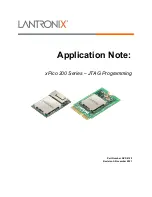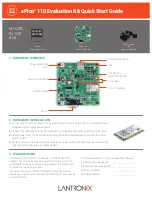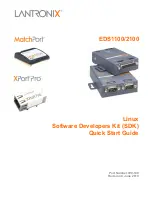
Z-Stack User's Guide - CC2430ZDK
F8W-2005-0036 Version 1.4.3
4
Copyright
2005-2007 Texas Instruments, Inc. All rights reserved.
This FLASH memory location would also be used for factory commissioning of IEEE addresses
on devices that use Z-Stack. For CC2430-F128 devices, used on all boards in the development
kit, the least significant byte of the IEEE address is located at “linear” FLASH memory address
0x1FFF8, corresponding to “banked” address 0x3FFF8.
Z-Stack treats the IEEE address area of FLASH as “write once” memory. When an attempt is
made to write an IEEE address to that location (via Z-Tool, etc.), it will succeed only if the
current contents are empty (0xFFFFFFFFFFFFFFFF). In other words, any 8-byte pattern other
than all 0xFF values, is considered to be a valid IEEE address and won’t be modified.
5. Configuring and Using Z-Stack
5.1. Configuring Z-Stack
For the purposes of this release, the ZigBee Logical Device Type and Profile are pre-configured.
Details on configuring and programming sample applications for Z-Stack are provided in the
sections beginning with “Building the SampleApp Devices”.
5.2. Logical Device Types
Z-Stack can be configured in one of three ways:
•
ZigBee Coordinator – This device is configured to start the IEEE 802.15.4 network and
will serve as the PAN Coordinator in that network.
•
ZigBee Router – This device is configured to join an existing network, associate to a
Coordinator or Router, and then allow other devices to associate to it. It will route data
packets in the network.
•
ZigBee End Device – This device is configured to join an existing network and will
associate with a Coordinator or Router.
5.3. Building SampleApp Devices
The remainder of this section describes programming SmarCC2430EM boards to set
up a simple ZigBee network with 2 or more nodes, a SampleApp Coordinator and one or more
SampleApp Routers. The SampleApp project file provides configurations to uniquely build
either of these devices, a well as, to build a generalized “Demo” device which permits selection
of Coordinator and Router operation by setting one jumper on the SmartRF04EB board. The
following examples provide details on building and running the “Demo” sample application on
two or more devices.
5.4. Building a SampleLight Coordinator Device
•
Make sure all tools have been installed (Sections 4.1 – 4.2)
•
Connect a SmartRF04EB board to the development PC with a USB cable. Apply power
by moving switch S3 toward the CC2430EM board. If Windows needs to install a driver,
browse to
C:\Program Files\IAR Systems\Embedded Workbench 4.0\8051\drivers\Chipcon
to
locate the necessary files.
•
Navigate to the SampleApp project directory and launch the IAR Embedded Workshop
by double clicking on the
SampleApp.eww
file:

































